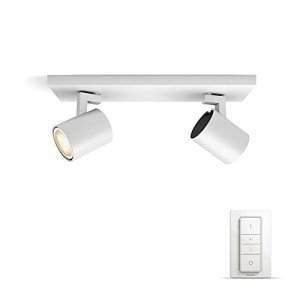11 Strategies To Completely Block Your Interior Lighting UK
Interior Lighting in the UK: A Comprehensive Guide
Interior lighting plays a crucial role in creating an environment, enhancing functionality, and expressing individual style within homes and organizations. In the UK, where the weather can be unpredictable, effective lighting is not only about aesthetic appeals however likewise about making areas feel warm, inviting, and useful. This article dives into different aspects of interior lighting, incorporating types, patterns, ideas, and frequently asked concerns.
Understanding the Importance of Interior Lighting
Lighting is typically considered the foundation of interior style. It affects state of mind, performance, and the viewed size of spaces. The right lighting can:
- Enhance the architectural features of a room.
- Emphasize artwork and decor.
- Improve security and security.
- Impact performance in workspaces.
- Develop a comfy atmosphere for relaxation.
Kinds Of Interior Lighting
Effective lighting design typically integrates 3 main kinds of lighting: ambient, task, and accent.
1. Ambient Lighting
This is the main source of light in a room, providing general lighting. Common sources consist of:
- Ceiling-mounted fixtures
- Chandeliers
- Recessed lighting
- Soft wall sconces
Ambient lighting creates a foundation from which other lighting types can build on.
2. Task Lighting
Job lighting focuses on specific areas to facilitate activities such as reading, cooking, or working. This type of lighting helps to minimize eye pressure and can considerably impact functionality. Common sources consist of:
- Desk lamps
- Under-cabinet lights in cooking areas
- Checking out lamps next to beds
- Track lighting targeted at work surfaces
3. Accent Lighting
Accent lighting includes drama and highlights specific objects or areas, such as artwork or architectural features. This type of lighting can produce visual interest and depth in a space. Sources include:
- Picture lights
- Decorative lamps
- Uplighters
- LED strip lights along racks
Using a mix of these lighting types can lead to a healthy and multifunctional space.
Popular Lighting Trends in the UK
The interior lighting landscape in the UK continues to progress, affected by style patterns, innovation, and consumer preferences. Here are some popular trends to enjoy:
Smart Lighting: The introduction of smart innovation has actually transformed how people handle lighting in their homes. Smart bulbs and systems like Philips Hue permit users to control brightness and color temperature via their smart devices.
Minimalist Designs: Sleek, basic designs that mix flawlessly with interiors are dominating the market. Pendant lights with fragile frames, LED strips, and geometric shapes are particularly trendy.
Industrial Lighting: This pattern showcases raw, reviewed products. Lighting And Lamps and Edison bulbs use a vintage touch that is both stylish and practical.
Eco-Friendly Options: With increasing awareness of sustainability, many customers are turning to energy-efficient LED alternatives and fixtures made from sustainable products.
Tips for Effective Interior Lighting Design
Creating an effective lighting plan requires thoughtful factor to consider of different elements. Here are some suggestions:
Consider the Purpose of Each Room: Every area has a different function. Consider what activities will happen and what type of lighting will support those activities.
Layer Lighting: Employ numerous kinds of lighting within a room to develop depth and flexibility. Integrate ambient, job, and accent lighting to enhance both looks and performance.
Use Dimmers: Dimmers permit control over brightness levels, allowing users to adjust lighting according to mood and time of day.
Integrate Natural Light: Make the many of natural light sources like windows. Usage light, reflective colors for walls and home furnishings to optimize brightness.
Think Of Color Temperature: Different color temperature levels (determined in Kelvins) create various atmospheres. Warmer temperature levels (around 2700K-3000K) are comfortable, while cooler temperatures (4000K+) lend a more scientific or energetic feel.
Interior Lighting Mistakes to Avoid
To produce a well-lit space, it's important to avoid common lighting risks. Here are some errors to look for:
Underestimating Wattage: Insufficient wattage can result in dim, unwelcoming spaces.
Overlooking Scale: Fixtures that are too little for a room can watch out of location, while oversized fixtures can overwhelm a space.
Over-reliance on Ceiling Lights: Relying exclusively on overhead lighting can create uninviting shadows; balance with additional lighting types.
Poor Placement: Misplaced lights can develop locations that are too brilliant or too dark. Plan placements thoughtfully.
Frequently asked question Section
1. What is the distinction in between warm white and cool white light?
Warm white light (2700K to 3000K) produces a comfortable, welcoming environment, best for living rooms and bed rooms, while cool white light (4000K to 5000K) is more matched for offices as it boosts concentration and clearness.
2. How can I take full advantage of natural light in my home?
To optimize natural light, use light-colored walls, tactically place mirrors to reflect light, and choose sheer window coverings that enable sunshine to travel through.
3. How do I choose the best light?
Consider the size of your area, the style of your decoration, and the function of the area. Make sure the scale of fixtures complements the room and matches the overall aesthetic.
4. Are LED lights much better than traditional bulbs?
Yes, LED lights are more energy-efficient, have a longer life-span, and can provide a variety of color temperature levels, making them a more sustainable lighting alternative.
5. What should I do if particular areas of my room stay too dark?
Consider including additional job or accent lighting to brighten those locations. Floor lamps, wall sconces, and even tactically positioned table lamps can assist ease dark spots.
Interior lighting is a vital element of home and business design across the UK. Comprehending the different types, existing trends, and finest practices can help residential or commercial property owners in producing areas that are not just elegant however also practical. With thoughtful factor to consider and preparation, efficient lighting can change any environment, enhancing both ambiance and use for several years to come.
